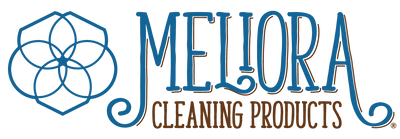From our founding in 2013 to January 1st, 2020, there was virtually no requirement for cleaning product companies to tell people what was in the products they were buying. Finally, in October of 2017, California did something about it by passing The Cleaning Products Right to Know Act.
- Packaging: The new rule says, as of January 1, 2021, a company must list all ingredients, except for ingredients considered “confidential business information” (like scent/fragrance ingredients) on the packaging, but does allow for some information to be provided via a link (if the packaging is very small, for example.) It also requires clear information on how to contact the company.
- Website: The new rule requires, as of January 1, 2020, the following listed on a company’s website:
- a list of ingredients used
- the purpose of the ingredient
- identifying information (CAS: Chemical Abstract Number)
- and links to more information, as well as links to SDS (Safety Data Sheets) for cleaning products.
The effect of this legislation is that much more information on product ingredients is available than ever before. California is the world's 5th largest economy, so most companies are planning to do what it takes to move towards compliance and start to reveal information that was previously hidden under the guise of "trade secrets." This means third parties (like our nonprofit partner Women's Voices for the Earth) can dig through ingredient lists and help people understand it better.
Ok, so what does this mean in simpler terms?
You know how when you pick up a bottle of bright blue glass cleaner, you're not really sure what's in there to make it blue? Or to make it clean, even?
The Cleaning Products Right to Know Act in California says the people who make that blue bottle of cleaner have to make a teeny bit of effort to tell you what's in that bottle.
That's new, and it's weird that it's new, and it's not okay that you don't already know about the blue stuff, but change here is a good thing.
What changes does this mean for Meliora Cleaning Products?
As a leader in ingredient selection and transparency, we already follow the spirit of the new law and have been disclosing information about ingredients from Day One back in 2013. We have the requested information up on our website under our Ingredients page. We promise to keep working to make sure we follow the exact letter of the law in terms of formatting, and what information belongs where, but ultimately the new law changes nothing about how our products are made.
We proudly announced our ingredients before the law and we'll keep doing so in the future.
How might this affect the rest of the cleaning product industry?
New laws and regulations mean change. Change isn’t always easy, even when it’s change for the better, which the Cleaning Products Right to Know Act totally is!
California’s law requires every company to have website information that lists "intentionally added ingredients" and also "nonfunctional constituents above 0.01ppm” in order to sell cleaning products in the state. However, it only applies to California. Another state (like New York) might decide to pass a similar law but require a different cutoff, say at 0.001ppm.
That means companies have to either 1) create products/information for different state guidelines or 2) make all products to the most stringent requirements of all applicable laws/statutes.
In practice, what usually happens, and what we expect to happen here, is a few more states will try to pass similar laws with some variations like I've stated here. Big companies will insist that the extra paperwork is "impossible" and "burdensome" (not true! It’s annoying, at most. If you're smart enough to design cleaning products, you are smart enough to make a few spreadsheets).
Then there will be a national law passed that's a compromise, that increases the amount of disclosure information about ingredients and preempts states from making more individual rules. Then we all settle into the new rules and hopefully, it's less than another 70+ years before we can improve them again.
In the meantime, we’ll be here, continuing to disclose 100% of our ingredients, including what’s in our scented products, on every product label as well as our website. It’s the least we can do for you, and the least you deserve.
You can follow along with this progress on our Ingredient Disclosure Map.
